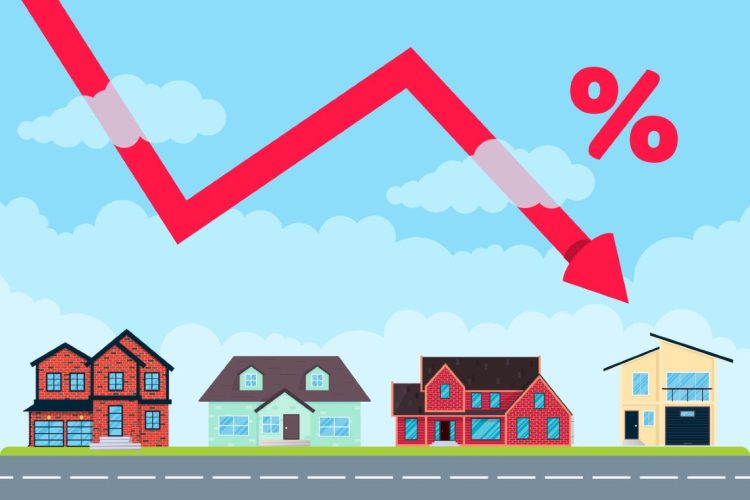Realtor.com’s July Monthly Housing Trends Report reflects a market that’s beginning to favor the buyer, where inventory is high and listing prices are dropping—but only in specific regions.
On a national level, the median listing price for homes has increased 0.5% in the past year—a far cry from recent years. The number of active listings has increased 24.8%, and new listings have increased by 7.3%.
Overall inventory levels have increased everywhere, rising 32.5% in the West, 25.4% in the South, 18.1% in the Midwest and 15.5% in the Northeast. The median price of listings year-over-year has dropped in every region but the Midwest, where it’s increased by 0.2%.
This increased inventory, as well as slower demand, specifically in Western and Southern markets, has caused median listing prices to drop—with 33 out of 50 of the largest metropolitan areas reporting price declines. Cities like Austin, Texas, and Denver, Colorado, have recently seen home prices fall by around 4% on over 30% of listings.
“In the South and West, we’re seeing clear signs of a shift toward buyer-friendly conditions—more price cuts, rising delistings and homes sitting longer on the market—which has led to sometimes sizable price adjustments since 2022,” Realtor.com Chief Economist Danielle Hale said. “Meanwhile, the Midwest and Northeast remain relatively tight, with less inventory relief and stronger pricing power for sellers.”
During the pandemic, metros in the South and West saw a surge in demand, incentivizing cities in these regions to rapidly build more homes.
“Now, with higher mortgage rates weighing on buyer activity, these markets have both a long way to fall and a lot more new housing that has come online over the past five years,” Realtor.com Senior Economist Jake Krimmel told RISMedia. “Contrast this with the Northeast and Midwest, where new construction during the pandemic was sparse and housing supply has been persistently tight.”
In metros like Baltimore, Maryland; Buffalo, New York; and Grand Rapids, Michigan; median listing prices have climbed by almost 7% in the past year. Since 2022, prices have increased by almost 20% in some of these areas.
“Like the South and West, the Northeast and Midwest are still feeling the effects of the same high-rate environment,” Krimmel said. “However, they have less room for prices to fall and lower inventory, so sellers are under less pressure. The result is a clear regional divergence: markets that rose the fastest are now correcting the most, while lower-inventory regions are proving more price resilient to high rates and declining demand.”
Gary Ashton, founder of the Ashton Real Estate Group with RE/MAX Advantage, told Realtor.com that while we’re not in a completely buyer-centric market yet, we’re definitely headed in that direction, at least in the South and West.
For more information, view the full report here.











